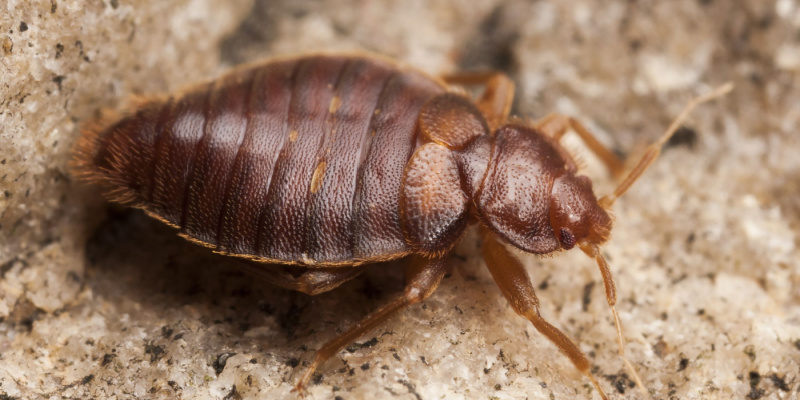Trusted Bed Bug Exterminator Near Me: DC Heat Treatment Professionals
Trusted Bed Bug Exterminator Near Me: DC Heat Treatment Professionals
Blog Article
Discovering the Science Behind Bed Bug Warm Treatments as a Lasting Bug Monitoring Strategy
In the realm of insect management, the mission for effective and sustainable options stays a continuous quest. One such method that has actually acquired grip over the last few years is using heat therapies to combat bed insect problems. By utilizing the scientific research behind thermal death points for these consistent pests, warm therapies supply an encouraging alternative to standard chemical-based approaches. The complexities of just how warmth efficiently gets rid of bed pests and the more comprehensive implications for sustainable bug monitoring practices make this a topic worth checking out better.
Bed Insect Warm Treatment Process

Thermal Fatality Point for Bed Pests
Exposing bed pests to elevated temperature levels beyond their thermal resistance range is critical for accomplishing effective obliteration in warm therapy processes. The thermal fatality factor for bed insects describes the temperature at which these parasites can not make it through. Study indicates that bed insects begin to perish when subjected to temperature levels above 113 ° F(45 ° C) for a continual period. As the temperature level raises, so does the mortality price of bed pests. At around 118 ° F(48 ° C ), bed bugs start to die quickly, with a death price of nearly 99% within mins of direct exposure. This demonstrates the sensitivity of bed pests to heats and highlights the efficiency of warmth treatments in removing problems. By getting to and maintaining temperatures above the thermal death factor for bed insects, parasite management experts can make certain extensive removal of bed pest populaces, consisting of hard-to-reach areas where chemical treatments may be less effective. Comprehending the thermal fatality factor for bed pests is essential for executing successful warm therapy strategies and accomplishing sustainable bug administration end results.
Benefits of Warm Treatments
Having developed the vital thermal death point for bed pests, it is necessary to now discover the considerable advantages that warm treatments offer in properly getting rid of these durable insects. When compared to typical chemical techniques, warm treatments existing several vital benefits. Among the main benefits is that warmth can permeate deep right into fractures and holes where bed insects conceal, making sure that even the most hard-to-reach locations are heated up to dangerous temperatures. This thorough method click resources not just eliminates online pests but likewise targets bed bug eggs, stopping future infestations.
In addition, warmth treatments are environmentally friendly and non-toxic, making them a sustainable bug monitoring approach. Unlike chemical pesticides, heat treatments do not leave damaging deposits that can posture threats to human wellness or the environment. This aspect is particularly important in sensitive atmospheres such as health centers, colleges, and houses where chemical usage might not be preferable.
In addition, warmth therapies have a high success price in removing bed pest invasions in a solitary treatment, minimizing the demand for numerous brows through and decreasing disturbance to residents. This effectiveness not only saves money and time but additionally gives assurance to those taking care of bed insect issues.
Effectiveness of Heat Treatment

Research study studies have actually constantly shown the efficiency of warmth treatments in attaining a high rate of bed bug mortality. Properly carried out heat treatments can get to all the gaps and splits where bed pests may be nurturing, guaranteeing a comprehensive technique to elimination. Moreover, warmth treatments have actually the included advantage of killing bed bug eggs, which are typically resistant to conventional chemical treatments. On the whole, the efficiency of warmth treatments in eradicating bed bug invasions makes them a trustworthy and sustainable insect management method.
Sustainable Parasite Management Conveniences
Carrying out lasting parasite management methods supplies lasting advantages for both the environment and public wellness. By making use of methods such as warm therapies for parasite control, we can lower the dependence on damaging chemical pesticides that can have unfavorable effects on ecological communities and human health - bed bug treatment. Sustainable pest monitoring techniques help in maintaining imp source biodiversity by targeting particular bugs without hurting non-target organisms, consequently keeping a well balanced environment
Furthermore, sustainable bug management methods add to the general health and wellness of the general public. By lessening exposure to poisonous chemicals utilized in conventional bug control techniques, heat treatments give a safer alternative for insect monitoring in residential, business, and public rooms. This decrease in chemical use also assists in preventing chemical residues from contaminating air, water, and dirt, securing environmental top quality.
Conclusion
In verdict, bed pest warmth treatments have been shown to be a lasting and effective pest monitoring strategy. The thermal death point for bed pests makes them prone to warmth therapies, which have numerous benefits over typical chemical treatments. The efficiency of warm treatments in getting rid of bed pest infestations while lessening environmental influence highlights the capacity of this technique as a sustainable solution for parasite control.
The bed pest warm therapy process entails elevating the temperature level within plagued areas to a level that properly removes bed insects and their eggs. By getting to and preserving temperatures over the thermal fatality point for bed bugs, insect monitoring experts can make certain comprehensive removal of bed insect populations, consisting of hard-to-reach locations where chemical therapies might be less reliable. One of the key benefits is that warm can pass through deep right into holes and fractures where bed insects conceal, ensuring that also the most hard-to-reach locations are warmed to lethal temperatures. Unlike chemical therapies that might leave behind resistant populations, warmth therapies supply a ecologically pleasant and safe option that can penetrate deep right into furnishings, wall surfaces, and various other hard-to-reach locations where bed pests hide.
The thermal fatality point for bed pests makes them at risk to warm therapies, which have countless advantages over traditional chemical therapies.
Report this page